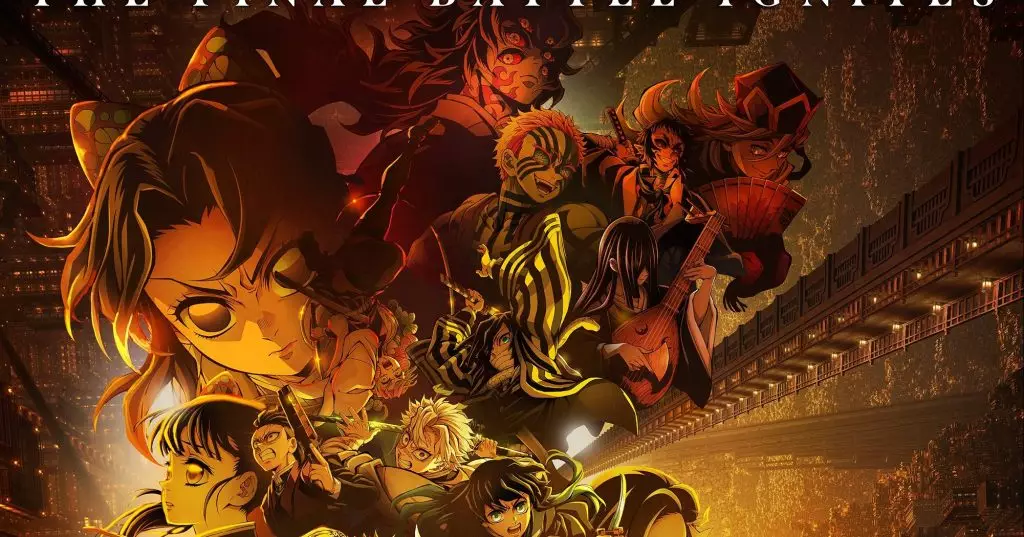In an era where Hollywood’s summer blockbuster dominance is waning, the current box office landscape underscores a seismic shift that favors niche genres with dedicated audiences. Last year’s record-breaking “Beetlejuice” reboot demonstrated Hollywood’s reliance on star power and franchise momentum, but this September, the industry is adapting to a different reality. Rather than expecting massive fireworks at the box office, studios are increasingly relying on the fervor of loyal fanbases, well-placed marketing, and global momentum—especially within animation and anime markets—that can sustain and even surpass expectations.
The much-anticipated opening of “The Conjuring: Last Rites” is projected to be modest but respectable, signaling Hollywood’s cautious approach amid uncertain times. Meanwhile, anime’s burgeoning influence in the U.S. presents an astute example of how dedicated niche markets are reshaping industry dynamics, often outperforming traditional Hollywood endeavors in their respective categories.
An Unprecedented Fan-Driven Phenomenon: Demon Slayer’s International Domination
The real story isn’t just about the weekly box office figures but about how “Demon Slayer: Infinity Castle” is rattling the foundations of the global film market. It’s a stark reminder that in the modern era, devout, well-organized fandoms can propel a product to stratospheric heights—much faster and more fiercely than the traditional Hollywood model would predict.
This anime film, based on Koyoharu Gotouge’s beloved manga series, is not just another sequel; it is a cultural event. Early presales across major U.S. theaters have crossed $10 million—an incredible feat that surpasses previous records set by “Jujutsu Kaisen 0” and “Mugen Train.” These numbers indicate a frontloaded, highly engaged audience that is willing to flock to theaters in unprecedented numbers, especially in IMAX and premium formats. Unlike Hollywood blockbusters, which often enjoy sustained audience interest over weeks or months, anime movies like this tend to enjoy a powerful opening surge, largely driven by fan loyalty and intense anticipation.
The momentum is palpable. With early screenings announced weeks in advance, fans are clearly eager to be part of this event from the very first showings. This speaks volumes about the changing nature of moviegoing—where passionate fan segments can turn a niche product into an international blockbuster, often dwarfing the performance of comparable Hollywood films. Their impact extends beyond box office numbers; they create cultural phenomena that ripple through social media, fan communities, and licensing deals worldwide.
Global Reach and Cultural Significance
What elevates “Infinity Castle” beyond the typical anime release is its global footprint. The film has already amassed close to $193 million internationally, with a striking 75% coming from Japan alone. Its debut in Southeast Asian markets achieved record-breaking figures, surpassing even “Frozen II” for animated openings in those regions. This regional strength highlights a broader trend: Japanese franchises are increasingly commanding global attention, underscoring the declining dominance of Hollywood in certain entertainment sectors.
Furthermore, the film’s success isn’t solely attributed to Japan’s robust animation industry but also to its strategic release format—subtitled and dubbed versions, early IMAX screenings, and targeted marketing campaigns that connect directly with core fans. U.S. theaters are stacking the deck in favor of these releases, cognizant that the anime community’s loyalty is both fierce and profitable. This approach emphasizes quality and authenticity, positioning anime as a serious contender in global entertainment spending.
From a center-right perspective, this phenomenon signals an evolving cultural landscape where market forces, driven by enthusiastic consumer bases, challenge the old Hollywood hegemony. It exemplifies how innovation, localization, and audience engagement can forge new pathways for success—roots that rely less on studio prestige and more on the organic power of dedicated fans.
The Future of Moviegoings: From Blockbusters to Cult Movements
The dominance of theatrical releases driven by franchise fatigue and streaming fatigue is giving way to a new paradigm—where passion and niche appeal can generate extraordinary results. “Demon Slayer” demonstrates that a well-maintained franchise with a committed international following can outperform Hollywood’s attempts at blockbuster dominance, especially when the product aligns with cultural trends and fandom momentum.
It’s no longer enough for films to simply have high budgets or star-studded casts. In the age of digital connectivity and global fandoms, success hinges on aligning with passionate consumer groups eager for authentic, culturally resonant content. These audiences are willing to show up early, pay premium prices, and turn a film into a cultural event.
The industry would do well to recognize this trend: the traditional Hollywood blockbuster model is increasingly vulnerable to the sophisticated, enthusiastic, and often more loyal niche markets. For those willing to adapt and cater to these dedicated communities, the rewards—both cultural and financial—are substantial. As “Infinity Castle” continues its worldwide ascent, it stands as undeniable proof that the future belongs to those who understand the nuanced power of specialized fandoms rather than relying solely on the conventional mass-market approach.

